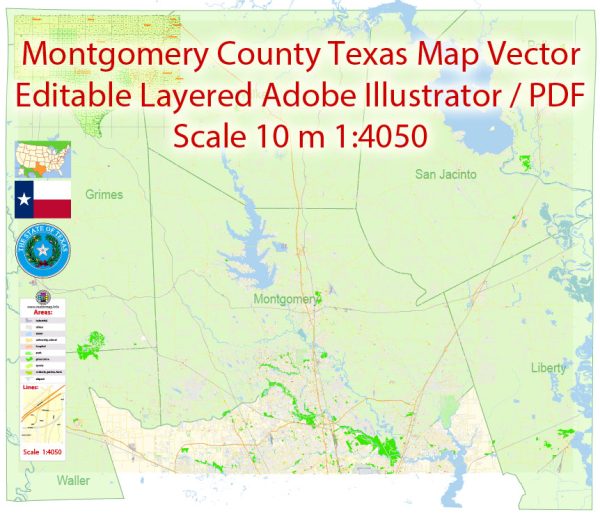Montgomery County, located in southeast Texas, has a diverse and interesting geology shaped by its geological history. Here’s a general description of the geology of Montgomery County:
- Gulf Coastal Plain: Montgomery County is situated within the Gulf Coastal Plain, a large region that stretches from Texas to Florida. This geological formation is characterized by relatively flat topography and a variety of sediments deposited by ancient seas and rivers. The county’s landscape is primarily composed of sedimentary rocks, such as sand, clay, silt, and gravel.
- Piney Woods Ecoregion: Montgomery County is part of the Piney Woods ecoregion, which is known for its dense forests of pine trees, including loblolly and longleaf pine. The geology of the county influences the types of soils and vegetation that thrive in the region.
- Aquifers: Montgomery County is underlain by several significant aquifers, including the Gulf Coast Aquifer and the Evangeline Aquifer. These aquifers are essential sources of groundwater for the county’s residents, providing water for drinking, irrigation, and industrial use.
- Cretaceous Strata: The geology of Montgomery County includes deposits from the Cretaceous period (about 145 to 66 million years ago). Fossils and sediments from this era can be found in the area. The Cretaceous rocks also contain valuable resources, such as sand and gravel used in construction.
- San Jacinto Fault Zone: The San Jacinto Fault Zone, a major geological feature in the region, runs through parts of Montgomery County. This fault zone is associated with some seismic activity in the area, though it’s generally considered low-risk compared to more seismically active regions.
- Sinkholes: Sinkholes can be found in Montgomery County, particularly in areas with underlying limestone formations. These sinkholes are the result of the dissolution of limestone by groundwater over time.
- Karst Topography: Some parts of Montgomery County exhibit karst topography, characterized by sinkholes, caves, and underground drainage systems formed by the dissolution of soluble rocks like limestone and dolomite. Karst features are more common in areas with significant limestone deposits.
Overall, Montgomery County’s geology is marked by its connection to the Gulf Coastal Plain, making it rich in natural resources and influencing its unique landscape, vegetation, and water sources. This geology also plays a significant role in shaping the environmental and economic characteristics of the region.


 Author: Kirill Shrayber, Ph.D.
Author: Kirill Shrayber, Ph.D.